Building the Audio Note Kit EL-34 and Elekit 8900 integrated amplifiers by John Hoffman.
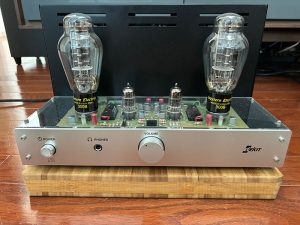
To Kit or Not to Kit
 I love learning how things work. I don’t mind going slow and thinking through problems, unlike a good friend who gets angry when faced with any technical problem. With my adventurous, patient attitude, I built a kit amplifier. The first two kits I built were Amp Camp Amps designed by Nelson Pass and sold via diyAudiostore.com. When building a kit, problems almost always need to be thought through, so if you are not of the same ilk as me, a kit amplifier is not a way to save money. I would advise buying something complete or paying someone to build it for you.
I love learning how things work. I don’t mind going slow and thinking through problems, unlike a good friend who gets angry when faced with any technical problem. With my adventurous, patient attitude, I built a kit amplifier. The first two kits I built were Amp Camp Amps designed by Nelson Pass and sold via diyAudiostore.com. When building a kit, problems almost always need to be thought through, so if you are not of the same ilk as me, a kit amplifier is not a way to save money. I would advise buying something complete or paying someone to build it for you.
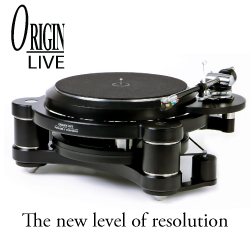 After successfully building two Amp Camp Amps with minimal problems, I decided to venture into building the Elekit 8900. This SET (Single Ended Triode) kit was designed and created in Japan and sold through TubeDepot.com. I purchased upgraded Lundahl amorphous core transformers and Vcap capacitors from Elekit’s Victor Kung. A cool feature of the Elekit is its circuitry, which allows 300B and 2A3 tubes to be used. The Elekit circuitry detects the voltage needed for each tube (they are different).
After successfully building two Amp Camp Amps with minimal problems, I decided to venture into building the Elekit 8900. This SET (Single Ended Triode) kit was designed and created in Japan and sold through TubeDepot.com. I purchased upgraded Lundahl amorphous core transformers and Vcap capacitors from Elekit’s Victor Kung. A cool feature of the Elekit is its circuitry, which allows 300B and 2A3 tubes to be used. The Elekit circuitry detects the voltage needed for each tube (they are different).
The Elekit was straightforward and boosted my confidence that I could build a larger project. I selected the Audio Note Kit (ANK) EL34 amplifier. I also upgraded this kit to include Quad Core transformers, Audio Note UK copper foil capacitors, and Audio Note UK resistors.
The Build.
The Elekit instructions could not be more precise. Let me emphasize this point: They were so well written and crystal clear that there was no room for improvement. The instructions even alert you when a part’s orientation is essential. Because of this clarity, building the Elekit was a true pleasure.
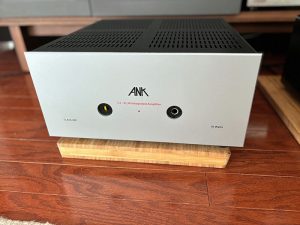
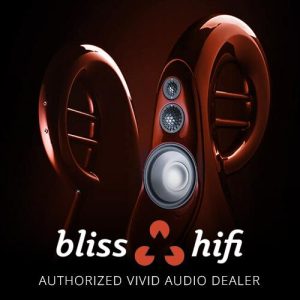 The Audio Note Kit (ANK) was not an easy build for many reasons, one being the instructions needed to be clearer and more consistent. Some examples of my challenges were pictures in the manual of the back of the circuit board, which is of zero use when verifying the correct orientation of parts. The manual said confusing things such as “attach ground wires to the ground post on the chassis” when there is no ground post on the chassis. I have enough experience to know this meant finding a place on the chassis where there was no paint and then finding a bolt to make a ground post. Other frustrations were conflicts between the paper instructions in the different bags of parts, which conflicted with the manual, and unlabeled and missing parts. I could go on, but you get the point. I had none of these issues with the Elekit.
The Audio Note Kit (ANK) was not an easy build for many reasons, one being the instructions needed to be clearer and more consistent. Some examples of my challenges were pictures in the manual of the back of the circuit board, which is of zero use when verifying the correct orientation of parts. The manual said confusing things such as “attach ground wires to the ground post on the chassis” when there is no ground post on the chassis. I have enough experience to know this meant finding a place on the chassis where there was no paint and then finding a bolt to make a ground post. Other frustrations were conflicts between the paper instructions in the different bags of parts, which conflicted with the manual, and unlabeled and missing parts. I could go on, but you get the point. I had none of these issues with the Elekit.
End result and Sound:
The Elekit played perfectly as soon as I turned it on. Dead quiet and able to play 2A3 and 300B tubes as designed. Not so much with the ANK. As soon as I turned it on, I heard a horrible sound from the speakers. After some back and forth with ANK owner Brian Smith, he determined the amplifier was oscillating, which is not good. After hours of getting to know my multimeter and checking resistors on the main board, I found a bad part in the chain. Brian sent me a replacement part, which took a week or so to receive, but the issue was fixed. There were other minor issues, like the rod that connects the selector knob to the selector switch at the back of the amp was too short, which required a replacement. Brian was always patient and positive and made everything right, but I had to stay on top of him a bit to ensure parts were sent.
Was the hassle worth the result for the ANK amp? YES!! The Sound of this amplifier is on the warm side of neutral but with plenty of clarity. It presents the perfect combination of warmth, clarity, dynamics, and sound stage depth and width for the illusion of real music. To my ear, it is the perfect balance between warm/engaging and resolution. My mentor has taught me to be a tone-first music audiophile over all other sonic aspects. The ANK does it for me.
 I just got in the Linear Tube Audio Velo preamp, and it was a wonderful match with the ANK, so I converted the ANK integrated to a power amplifier. I learned from removing the preamp buffer board that the power amp is a much easier build. Most of the complications I had involved the installation of the preamp board and selector switch, so that’s something to consider.
I just got in the Linear Tube Audio Velo preamp, and it was a wonderful match with the ANK, so I converted the ANK integrated to a power amplifier. I learned from removing the preamp buffer board that the power amp is a much easier build. Most of the complications I had involved the installation of the preamp board and selector switch, so that’s something to consider.
Brian Smith, owner of the Audio Note Kit, told me he likes to talk with customers to gauge their experience level and offers to assist in building or completing the build. He also said the development of the EL34 amplifier took ten years to perfect, going back and forth with the Audio Note UK designer to get the end result.
Moving to the Elekit, I heard more transparency, clarity, and a quieter background. It is like Solid State quiet. The presentation is closer to neutral with the 2A3 tubes and has a slight mid-range bump with the 300B tubes. It produced a holographic image with the 300B tubes that put me in the room with the musicians. The Elekit was clearer and more resolving than the ANK amplifier, but I connected to music more with the ANK camp than the Elekit. Herb Reichert did a great review on the Elekit 8900, which inspired me to build it, so I suggest reading his review here.
Conclusions:
If you know how to use a multimeter and read a schematic, I recommend the ANK amp with upgraded parts. It is a dream to own and hear, but you will work to get there. I love this amplifier.
The Elekit is an easy build if you can solder and follow obvious instructions. It is a great choice if you like the Sound of 300B and 2A3s in a pure form. Herb’s description of the Sound is well-said and in line with what I heard. The Elekit has a headphone amp function, which I did not test or use, so I am unable to comment on that.
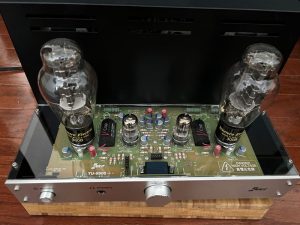
Above is the inside of the Elekit. It is refined, compact, and well-designed, with a clear top from Victor Kung.
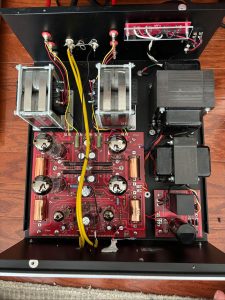
Here is the inside of the ANK amplifier after I converted it to a power amplifier and removed the preamp buffer board and selector switch. You can see a much more complicated system. You have to wire the boards together, and you cannot go by the color of the wire since what is supplied often differs from what the manual says. The Elekit boards are connected via multi-pronged connectors that snap together, making them very clean and easy to assemble.

Audio Note Kit https://ankaudiokits.com
Level 4 EL34 amplifier with upgrades $3,250.
Elekit 8900 https://www.tubedepot.com/products/elekit-tu-8900-300b-2a3-tube-amplifier-kit
$2,555 without tubes.
Gear used in the review
Streamer: Lumin U2 Mini
Digital Cable: Jenna Labs Haldi digital cable https://www.jenalabs.com/interconnects/interconnect-digital-23.html
DAC: Reimyo DAP-999EX
Preamplifier: LTA Velo
Speakers: Devore O/96 speakers
Speaker Cables: Black Cat Copper Tone speaker cables
Stereo Times Masthead
Publisher/Founder
Clement Perry
Editor
Dave Thomas
Senior Editors
Frank Alles, Mike Girardi, Russell Lichter, Terry London, Moreno Mitchell, Paul Szabady, Bill Wells, Mike Wright, and Stephen Yan,
Current Contributors
David Abramson, Tim Barrall, Dave Allison, Ron Cook, Lewis Dardick, John Hoffman, Dan Secula, Don Shaulis, Greg Simmons, Eric Teh, Greg Voth, Richard Willie, Ed Van Winkle, Rob Dockery, Richard Doran, and Daveed Turek
Site Management Clement Perry
Ad Designer: Martin Perry





Be the first to comment on: Building the Audio Note Kit EL-34 and Elekit 8900 integrated amplifiers by John Hoffman.